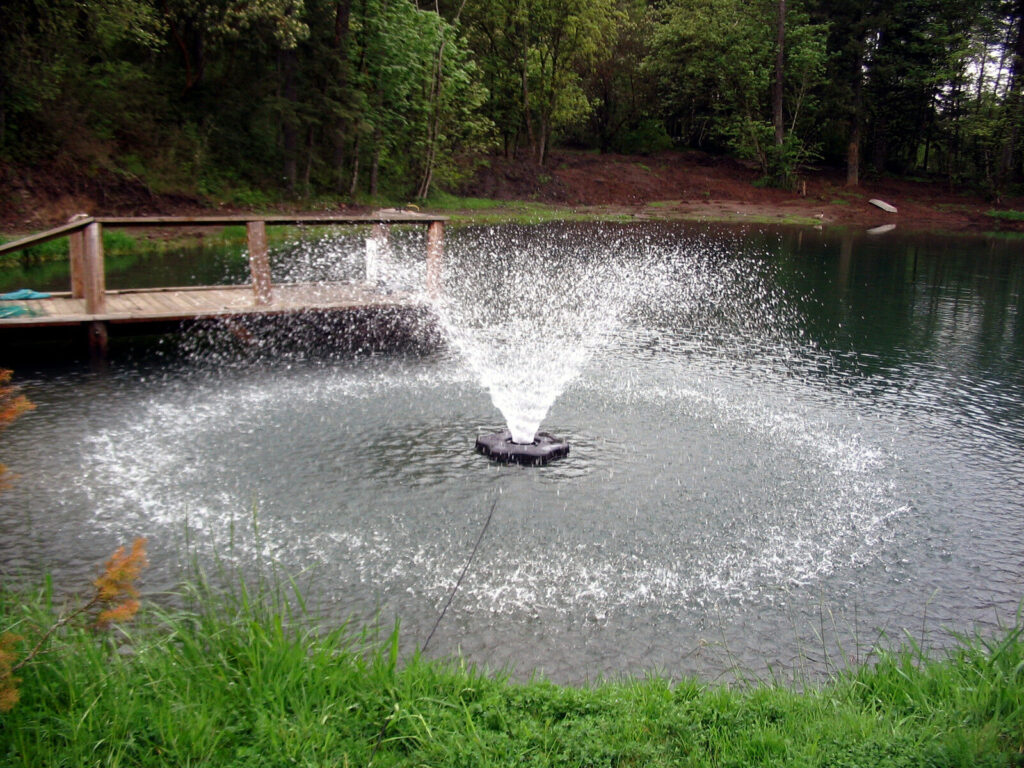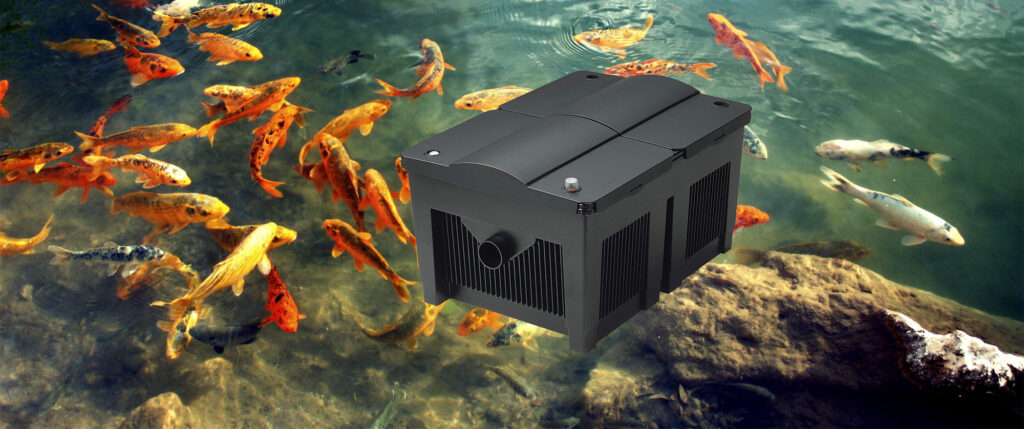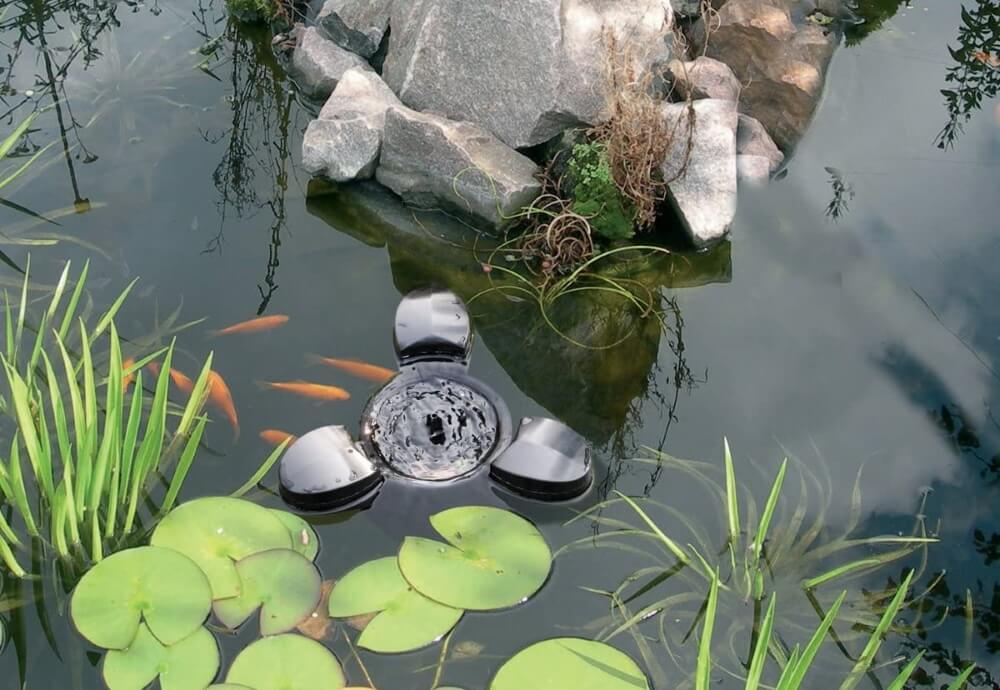
While a clear view of the fish in your pond is nice, you may not always have that, as the water will occasionally get murky and cloudy. Notably, murky waters can be cause for concern. However, they are sometimes just a part of the pond ecosystem’s natural cycle. Depending on the reason, the murky water may clear out on its own. However, if it doesn’t, you’ll need to know how to clear murky pond water manually.
The write-up below should tell you when your input is needed and when it’s not. Also, it guides you on specific steps to take to clear cloudy pond water depending on the cause.
The amount of danger associated with murky water in your pond will depend on the cause of the turbidity. As we mentioned before, it can sometimes be harmless, and you won’t even need to lift a finger to clear the water. One example of this is when the pond is relatively new. Notably, there should be bacteria colonies in the water that get rid of organic waste over time. However, if the pond is new, the bacteria may not have multiplied enough to be effective.
In the above scenario, you can wait a while for the ecosystem to stabilize so that the pond can be self-cleaning. Also, if you were to introduce fish before the ecosystem is mature, it would make it that much harder for the bacteria to clear the pond. Lastly, you can tell that your pond is still too new if the water is a dark green color and there is foam and slime build-up on the structure’s walls.
However, in some cases, the murkiness may be bad news and can lead to the death of all your fish and other healthy micro-organisms if you’re not careful. As a pond owner, you should be able to tell the difference between healthy and harmful murkiness; otherwise, you’ll live your life panicking and taking action when you need to sit back and relax.
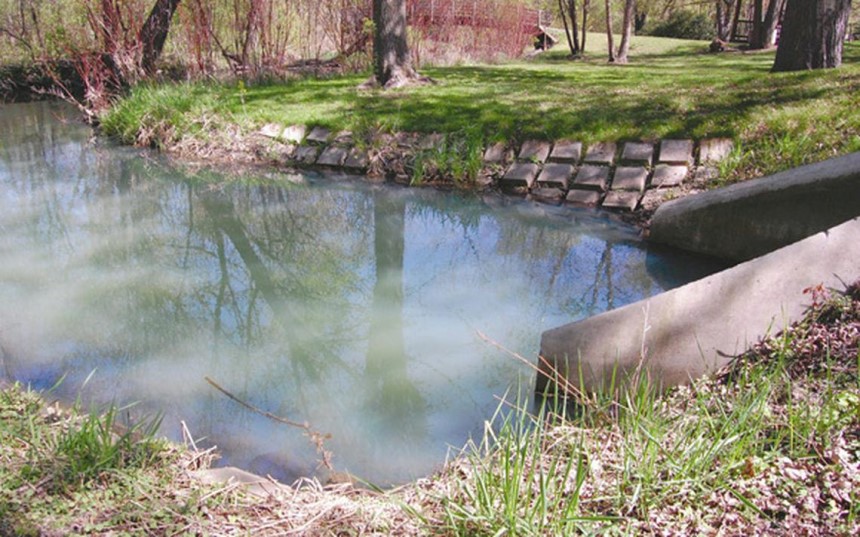
Reviewers and previous users recommend the Aquascape 98949 bacteria concentrate for new pond owners. The fact that one container can treat up to 104,000 gallons of water means that you can use this concentrate for a while before it is depleted.
Notably, you shouldn’t try to save your money and time by introducing fish before the bacteria are well established. They will end up not eating, having trouble breathing, and it may even lead to rot on their gills and fins.
Also, the murkiness could be caused by fish waste. You may be unintentionally overfeeding your fish. While inexperienced pond owners may not know this, your fish should not entirely depend on you for their food. If the pond is mature enough, other life forms in the water can provide that much-needed nutrition. However, if you overfeed them, it’s obvious they will have a lot of waste.
Additionally, fish tend not to overeat. As such, they will simply leave the food you put in the pond if they are satisfied. This will add to the murkiness of the water as well.
Also, filtration systems help clear out some organic waste by breaking it down into useful materials. If your filtration system isn’t working the way it’s supposed to, you’ll have more organic waste suspended in your water than you know what to do with.
Mud and inorganic materials may also be one reason why your water looks cloudy. Notably, these pond impurities are easy to come by, especially in the rainy season. This is because water will flow into the pond while carrying sediment from the edges.
The mud, clay, and inorganic material particle sizes will vary, and thus your filters may be ineffective against some of them. Also, mud and clay particles may be a little problematic in the pond due to the electrical charges they carry.
Ideally, they should settle at the bottom of the pond allowing the water to be clear. However, unlike regular dirt, mud and clay particles carry electrical charges. This means the particles will tend to repel each other. Consequently, they will spread out all over the pond making the water seem murkier than usual. This problem resolves itself if given enough time. That said, you can figure out ways to keep rainwater from getting into your pond, e.g., creating drainage ways that lead away from the pond.
Algae growth is another huge problem when it causes pond turbidity. Remember that the right amount of algae should be good for the pond ecosystem. That said, it can get problematic when it starts covering the whole pond. One reason for this could be leaky pond liners that give the algae more than enough nutrients to grow and multiply.
Also, more algae means more problems as the pH levels will rise in the pond, and as a result, more organic material particles will be left in the water. The solution for this is simple: get rid of the algae.
While it is preferred that you clear your pond water in the autumn season while pond life is inactive, in some cases, you’ll have to do it earlier or later in the year. This is when the water quality in the pond is so bad that you can’t possibly wait too long; otherwise, you may find dead fish.
Admittedly, you can’t always tell that pond life is in dire straits by looking at the water. As such, regular testing of the water quality becomes necessary. Of course, you’ll need to know which of the above-mentioned water turbidity reasons is the culprit is if you’re to be effective in your clearing process.
How you clean a cloudy-looking pond will, of course, depend on how it got murky in the first place. However, below are some general pond clearance guidelines that should have your pond looking clearer and clearer by the day.
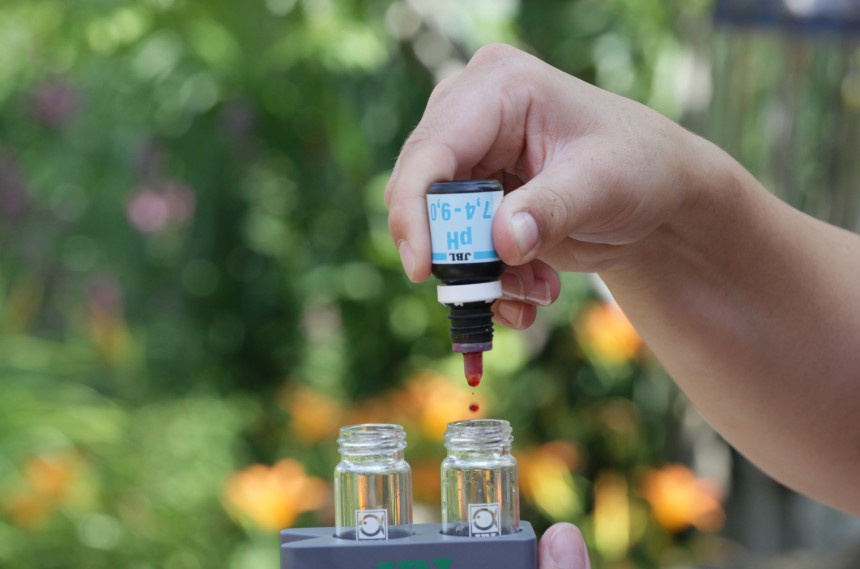
There are different types of pond water testing kits at different price points and with varying effectiveness ratings. Getting a high-quality testing kit is imperative so you can have the most accurate readings possible. To that end, the API POND MASTER kit comes highly recommended by both users and experts in pond care. You can conduct more than 500 tests using the color charts provided in the kit in addition to the test tubes and test bottles.
It is recommended that you keep testing the pond water at least once a week, and this will help you identify problems before they start killing your fish. The tests can also help you eliminate issues that may cause water murkiness.
If your pond is fishless and you plan on keeping it that way, you can start by checking pH levels. Ideally, the readings for such a pond should be at a range of between 6 and 8.5. Conversely, if fish are present, the ideal pH range is between 7 and 8.
You should also be informed on the dangers of low or high pH Trusted Source Fish Pond Water Quality: As Simple as Chemistry 101 Water quality is one of the most overlooked aspects of pond management – until it affects fish production. www.noble.org . For instance, it seems that in pond water where pH is lower than 6.5, the fish won’t be able to grow. If it gets lower than five, the fish fingerlings will die, leaving you with a dwindling population of the aquatic creatures.
When the pH gets to less than four, the fish will start dying. The same is the case when the water is too alkaline and has reached a reading of 11. Of course, if it gets to these levels, it’s not only the fish that will suffer but other plants and micro-organisms as well. The result will be more organic materials floating in the water, making it ugly to look at.
Of course, if pH is the problem, there are ways to take care of that. However, you don’t stop testing there. Next, you check the carbonate hardness(kH) levels. Even if the pond pH is relatively normal, a low KH level means that things aren’t all rosy. Notably, you should look to regulate the KH levels as soon as possible before they start affecting the pH. Remember that if the KH levels are right, they keep the pH in check.
Lastly, check for significant ammonia levels in the water. Ideally, the ammonia levels should be as close to zero as possible. If they are higher, it points to a problem. This is because ammonia is caused by fish excrement, uneaten fish food, dead plants, and more decomposing organic matter.
Of course, if the pond is healthy, the ammonia is disposed of quickly and shouldn’t be a problem. However, if the ammonia levels are high, it means there are too many contaminants in the water and that it’s only a matter of time before it gets murky.
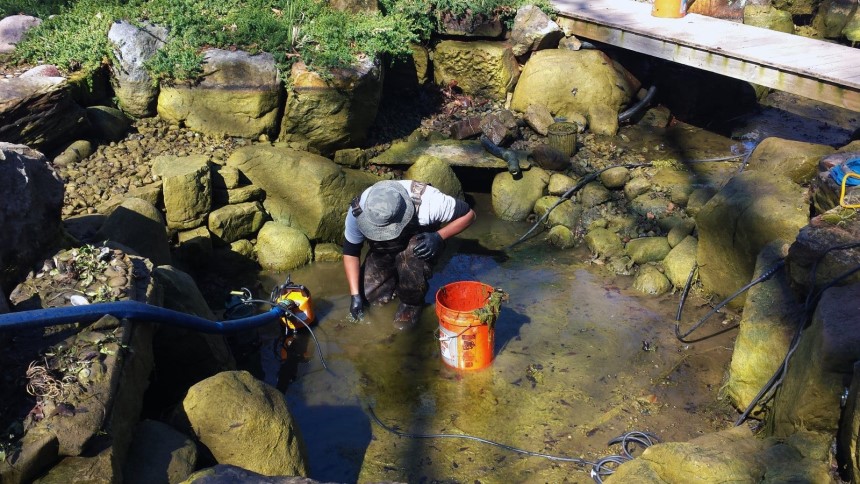
One way of doing so is purchasing and applying pond sludge removers. These sludge removers work by supplementing the population of bacteria in the pond tasked with breaking down sludge. The API Pond Cleaner comes highly recommended by users as a sludge remover. Once in the pond, it will break down decomposing leaves, dead algae, and even fish waste.
However, remember that once the sludge is broken down, it will float about in the water as particles. Consequently, you may have to think of a way to get rid of the particles, which is where pond filters come in. They will strain some of the solids left behind in the water and even help break them down further.
If there are a lot of particles to get rid of when you first start using the filter, expect your filter media to fill up fast. As such, you may have to replace it more often. According to most reviews, the Koral Filters PRO pad media works quite well with various filter models. It comes as a roll that you can cut several times to fit into your filter. Also, since it is reusable, you won’t have to spend much money replacing it time and time again.
Alternatively, you can use flocculants alongside the bacteria and a pond vacuum cleaner. The flocculants will bind together the small particles suspended in the water into larger solids that drop to the pond floor. As such, the vacuum cleaner will have an easier time picking them up, and you can then dispose of them however you like. That said, pond vacuums can sometimes still work on the sludge even before it is broken down.
Notably, the vacuum’s power rating affects how well it works against sludge. Consequently, most reviewers seem to have high praise for the OASE Pondovac 4 due to its power and the fact that it has a flow rate of 1300 Gph. It will thus make light work of most of the sludge.
The sludge removers, flocculants, and vacuums are all reactive measures. However, you can choose to use proactive solutions that keep sludge from ever becoming a problem. For this, you have to realize that most of the sludge originates from the leaves you let float on the surface of your pond after they have fallen from trees.
If you keep the water surface free of leaves and plant material, you’ll never have to deal with cloudy water caused by sludge. To this end, pond netting and skimmers can be quite useful. The net, however, can be exhausting to use as you’ll need to manually remove the debris and leaves with your hands.
As for the pond skimmers, they will automatically remove the plants and debris from the water surface once they have fallen. This will keep the leaves from becoming waterlogged and decomposing at the bottom of the pond.
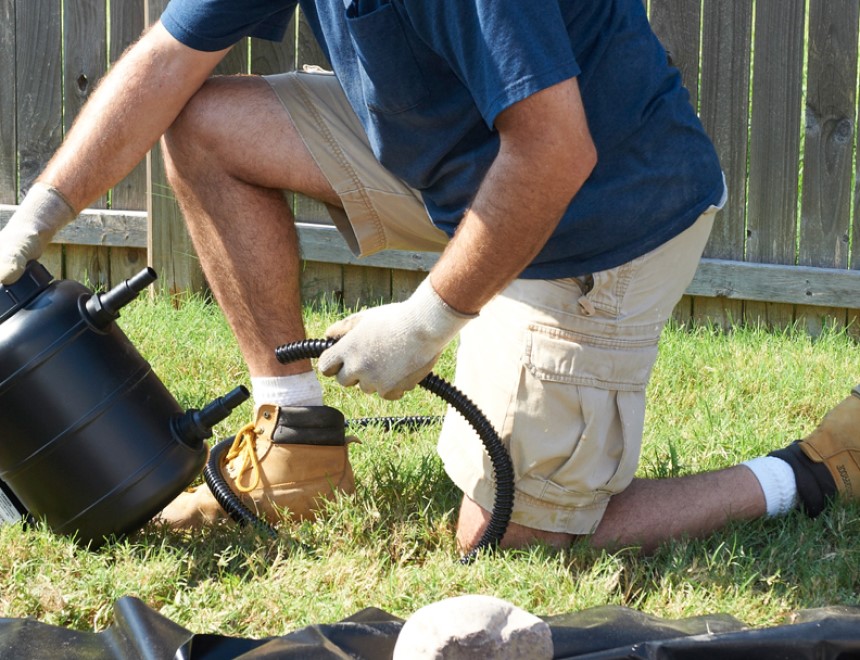
Filters use bacteria to break down organic particles. These bacteria tend to settle and form colonies in the filter media, and as such, they can handle most of the organic particles that pass through them. That said, the filter will clog over time and thus might need to be changed.
It’s impossible to know if the media is clogged without opening up the machine. Consequently, you should make it a point to open and check on it regularly. That said, do note that changing the filter media means that you’ll disrupt the bacteria colonies. After that, it will take some time for enough bacteria to settle in the filter. In the meantime, the machine won’t be 100% effective.
Also, other mechanical components of the filtration system may not be working as they should. This will, of course, hinder the filter’s efforts to clear organic particles from the pond.
Many pond owners recommend the OASE BioSmart 5000 filter since it notifies you when it needs to be cleaned. Additionally, it supports both mechanical and biological filtration processes.
You can also check whether the filter is right for your pond size. Notably, the different filters have varying capabilities in terms of the pond size that they can handle. There’s no problem if the pond is smaller than the mentioned capabilities of the filter. However, if the pond is larger, the filter may not handle the workload all that well.
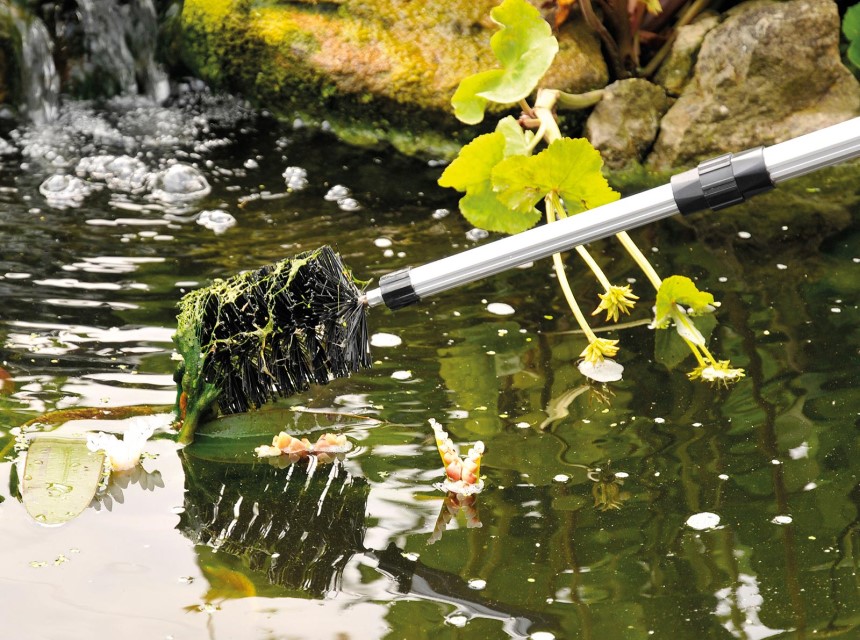
If, however, the algae population grows unchecked, the pond will undoubtedly turn murky. This problem is, however, specific to free-floating algae. Notably, an algae problem is often presented as a green substance on the surface of the pond. On the other hand, filamentous algae may not affect the clarity of the water as much as its free-floating counterparts.
Do note that besides making your water murky, free-floating algae also has other side effects. Since it covers the pond surface, sunlight will be unable to reach other plants and the fish in the pond. Next, it will hog some of the pond’s nutrients that should be shared throughout the whole ecosystem. Lastly, it can drastically affect the pond’s pH levels leading to the death of fish and even plants.
To remove the algae and the accompanying murkiness, you’ll need to invest in yet another piece of equipment known as the UV clarifier. Once installed in your pond, these clarifiers will target the algae and eliminate them little by little. If you add some of these gadgets to your pond when it is still new, you may never encounter excess algae unless the clarifiers are damaged.
Murky water can be a sign of danger, but you don’t always have to react to it. Instead, you should take a moment, investigate the causes and determine if any action is needed. Notably, even rivers tend to get cloudy and murky when it rains, so expect that for your pond as well.
If you test the water and it is safe for your fish, you should wait for the situation to resolve itself. That said, if you do find the high turbidity to be problematic, the tips above show you how to clear murky pond water naturally and mechanically.
